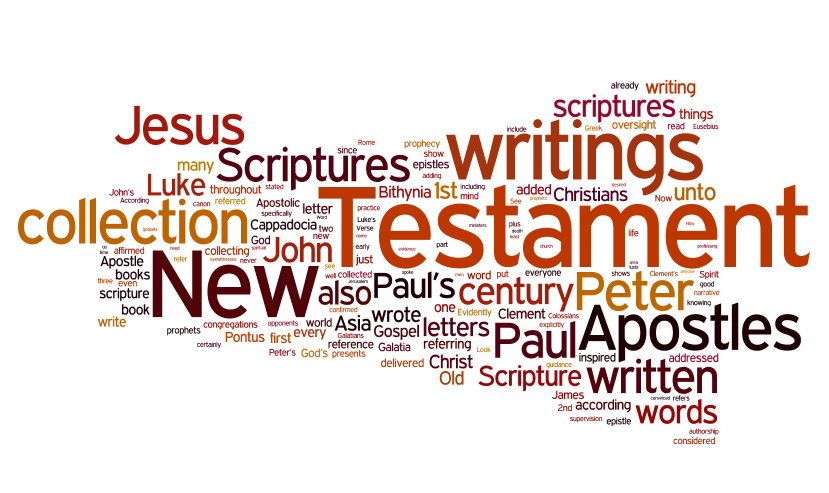This is the second article write-up in the new blog series Encountering the New Testament.
Chapter Summary
- The Bible has shaped the world in which we live, and no one is free from its influence.
- The Old Testament tells of God’s creation of the world, humankind’s fall into sin, and God’s saving work to undo sin’s consequences. It is divided into three parts: the Torah, the Prophets, and the Writings.
- The New Testament is the testament of God’s saving work in more recent times and it announces the Saviour (Messiah) whom the Old Testament awaits.
- Study of the New Testament is important because it mediates God’s presence, is of ultimate personal significance, and is foundational to cultural literacy.
- The 27 books of the New Testament include four books called Gospels, one book that traces the rise of the early church (Acts), 21 epistles or letters and one book of prophecy.
- The New Testament writings are inspired by God. The Holy Spirit worked together with the hearts and minds of the followers of Jesus to produce these trustworthy writings.
- The New Testament canon is a collection of writings that came together in the opening generations of the church’s existence. Like all Scripture, it was given to the church for teaching, for reproof, for correction, and for training in righteousness. 2 Timothy 3:16.
- New Testament manuscripts were first written on papyrus and later on leather. The manuscripts are of several types: papyri, uncials, minuscules, and lectionaries.
- The New Testament test we have is secure because extensive evidence supports it, the authors of the books wrote them within living memory of Jesus’ life, and ancient versions of the text were widely distributed.
- Christians should study the New Testament so that they will avoid misinterpretation based on preconceived ideas and misplaced reliance on the Holy Spirit, and so that they will have the appropriate historical foundation for understanding and applying its teachings.
Study Questions
1. What does “testament” mean in the titles “Old Testament” and “New Testament”?
Literally, the word “testament” can mean story, promise, recording. There is a narrative style to the Bible, but to read both Old and New Testaments in a purely story-book, narrative has limitations. The dictionary definition for the general term “testament” states:
a person’s will, especially the part relating to personal property.
In this way, the Old Testament is the will of God for His chosen people, the Jews. Similarly, the New Testament is a testimony of God revealed to us in he form of Jesus as Messiah, Son of God.
2. What is the relationship of the Old Testament to the New Testament?
Chronologically speaking, the Old came first, and the New proceeded it. In the Old Testament, prophecies are foretold of the coming Messiah, the one saviour to the world and Jews who would restore them back to God. The New Testament provides eyewitness accounts of the fulfilment of those prophecies in Jesus of Nazareth. Jesus’ numerous references to the teachings handed down via the Septuagint (Greek translation of the Old Testament) provide cross-references between the Old and New Testament. It is also important to remember Jesus’ words that He did not come to replace the Old Mosaic laws, but to fulfil them. The Old Testament taught about the Sabbath, as but one example topic; and Jesus was proclaimed Lord of the Sabbath, in that He fulfilled and completed the intrinsic nature of the Sabbath.
3. What is cultural literacy? What part does the New Testament play in acquiring it?
To be culturally literate means to have a familiarity with the board topics of science, humanities and arts. Those categories exist at a high academic form of knowledge groupings, but it extends further and deeper – into our beliefs, how society operates and relates to each other as well as the moral code which holds our society together. When you dig deeper in the philosophical foundations that underpin all of this, invariably the great minds from history who have influenced and guided us to where we are today – they all were influenced and delved richly into the Bible, and by definition, the New Testament in particular. Some of the things we take for granted and cherish as legislation and moral foundations are deeply rooted in things like the Sermon on the Mount.
4. What is a canon? What are the ancient divisions of the Old Testament canon?
I like to think the synonym “accepted” works well with “canon”. It is a characteristic applied to a body of knowledge – often we would say “such and such knowledge is canon”. In this example, “accepted” helps us to appreciate the canon which we call here New Testament or even Old Testament. It is not simply accepted for the sake of acceptance either – but the acceptance is derived from a source of authority – canon is ultimately the authoritative collection; the standard. For the original audience – the Jews – the canon of the Old Testament formed the basis for their lives. The Old Testament was divided simply, into:
- Torah (first five books: Genesis, Exodus, Leviticus, Deuteronomy and Numbers)
- Prophets (the Nevi’im: split between former prophets and latter prophets: 19 books in total)
- Writings (the Ketuvim: 11 books in total)
5. Give three reasons for special study of the New Testament.
- To separate fact from fiction; a lot of what we think we know of the Bible could be developed by external sources. We should always seek the clear truth and distill it from everything else that can cloud our judgement. This ensures we avoid misquoting bible verses and taking them out of true context and purpose.
- To avoid misguided reliance on the Holy Spirit: How do we know what God says? By confirmation. God will always be consistent between the impressions he places on our hearts, His Word and His people.
- To enable historical-theological interpretation: To take into account the geographical, political and cultural context when we consider the application of bible verses.
6. What are the bases of our high level of certainty regarding the text of the New Testament?
We have a high level of confidence and certainty in the New Testament because of the overwhelming evidence. The Gospel records were not just written within a generation of the eyewitness accounts, but the sheer volume or reproductions that saw the Pauline epistles spread around the Mediterranean make inaccuracies and falsehoods easy to identify if any were made. The effort made to preserve and transcribe copies upon copies, using papyrus is another testimony to the evidence. The Dead Sea Scrolls, discovered in 1946-7, have only provided even more justification that the modern bible translations we have today are extremely accurate to something that is now almost two millennia old.
7. What other subjects have you found it necessary to study in order to master the New Testament? What differences are there, if any, between study of those subjects and the study of the New Testament?
Whilst this topic, and indeed inspiration to read and learn is focused on the New Testament, clearly the following topics are highly relevant, inter-related and intertwined into our learning and understanding of the New Testament:
- archaeology: study of history through the recovery and analysis of historical material
- languages: Hebrew and Greek in particular. The Septuagint was the Greek writing of the Old Testament canon; Hebrew helps us appreciate the syntax and semantics.
- history: Roman Empire, Early/First Century Church
- Judaism, Israel and ultimately… the Old Testament!
The above are the most obvious areas of study that complement a study of the New Testament. Other topics/subjects form a secondary list of areas to discover and learn about since the New Testament provides a source and basis for their underpinnings: philosophy, arts and painting (renaissance), King Henry VIII and the Church of England, protestantism, reformation and Martin Luther. The book of Revelation alone introduces topics like the end times and eschatology.

